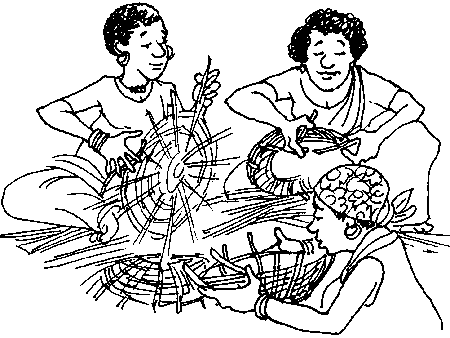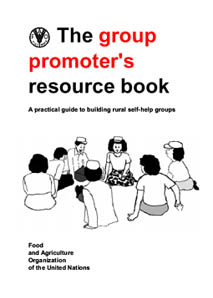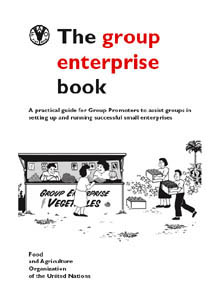“A penny saved is a penny earned” (England)
“Many pebbles make a mountain” (Korea)
“Save now, or never” (Mexico)
“Save today for a better tomorrow” (Zambia)
Both the rich and the poor understand the importance of saving. Just as the rich know that the more of their own savings they use to finance their businesses, the more independently and safely their investment will grow, the poor also know that they must save enough of this year’s harvest for next year’s seed and to meet their families’ food needs.
The poor face more difficulties in saving than the well-to-do because they have fewer productive resources, competing demands for these limited resources, and little or no access to safe saving facilities. Nevertheless, for the poor, saving is a necessary precondition for improving their lives.

People who save behave differently than people who don’t. If one has secure resources to fall back on in time of need, one is better able to cope with unforeseen events and emergencies, and plan for a better future. Thus, if the poor can improve their capacities to save more effectively, they will be better able to plan, invest in and manage their own development.
Experience has shown that group approaches to saving can help the poor save more efficiently, especially when access to saving facilities such as banks or other financial services is difficult.
By saving in a group, members can get quicker access to a larger amount of pooled resources than they would if they saved on their own.
Secondly, by saving as a group, members can protect themselves from unwanted financial demands from friends and family. This is important in many rural areas where there are intense family and social pressures to share all resources.
A group can also provide a more secure environment for people to keep their money. In many rural areas, people do not have access to banks or other safekeeping facilities. This leaves them with little choice but to hide the money at home or with a friend, hire a local money-keeper at high cost and risk, save in kind or not save at all.
While saving in a group can help individual members meet their personal financial needs, it can also assist self-help groups become stronger and more financially sustainable as organizations. Evidence shows that self-help groups with active saving programmes are more likely to achieve their goals independently without relying on external support. This is because they are able to mobilize their own resources and thereby invest in activities which they can handle by themselves.

Why this book?
This book is the fourth in a series of FAO field manuals on small farmer group development. The first three:



The Group Promoter’s Resource Book (1994),
The Group Enterprise Resource Book (1995), and
The Inter-Group Resource Book (2001)
cover the topics of group formation, group enterprise management and inter-group association development. All three of these manuals dedicate some attention to the topic of group-based savings, but none in sufficient detail and scope. This manual seeks to fill that gap.
The aim of this publication is to help the poor strengthen their capacities to accumulate productive capital through savings groups, especially in areas where no formal financial services are available, and to assist existing self-help groups establish their own saving activities. The information is presented in an easy-to-read form, with illustrations and group exercises.

The book’s emphasis on group saving approaches should not, however, be interpreted to mean that other saving approaches are unimportant. A group approach to mobilize savings may make sense at a certain time in one’s life, depending on his/her needs and capacity to access other services, but not in another.
For example, saving in-kind may be a preferred method in some villages, while saving at a bank may be a better option for others who have access to such a facility. Nevertheless, we are confident that group approaches to saving can make a significant difference in helping the poor accumulate resources where access to formal financial services is difficult.

Intended readers
The resource book is expected to be useful for:
Self-help groups and group promoters: Members and leaders of small farmers, women’s and other social and economic groups and their group promoters (local animators, extension workers, etc.).
Agencies promoting self-help group development: Staff in government agencies and NGOs using small group approaches to deliver agricultural extension, financial, health and/or educational services to the poor.
International development agency staff: Staff in international agencies promoting micro-finance initiatives may also gain new insights on how to incorporate group savings components into their development strategies.
Structure of the resource book
The resource book is divided into two parts:
Part A: SAVING discusses the advantages and disadvantages of saving in a group, the constraining and enabling factors to consider when starting a group saving activity, and describes some commonly used group saving methods.
Part B: TOOLS is a description of various tools that can be used to collect information on the village when starting a saving activity, improve personal financial management skills, plan for investment and growth, and monitor and evaluate the saving activity.
|
NOTE: The tools included in Part B are not the only ones that could be used and should not be seen as compulsory for starting a saving activity. They may or may not be used depending on the local situation. We encourage users to adapt the methods in the manual to fit their own situations and saving needs. Simplification or translation of the text into the local language and use of more appropriate illustrations and exercises may be helpful. |
